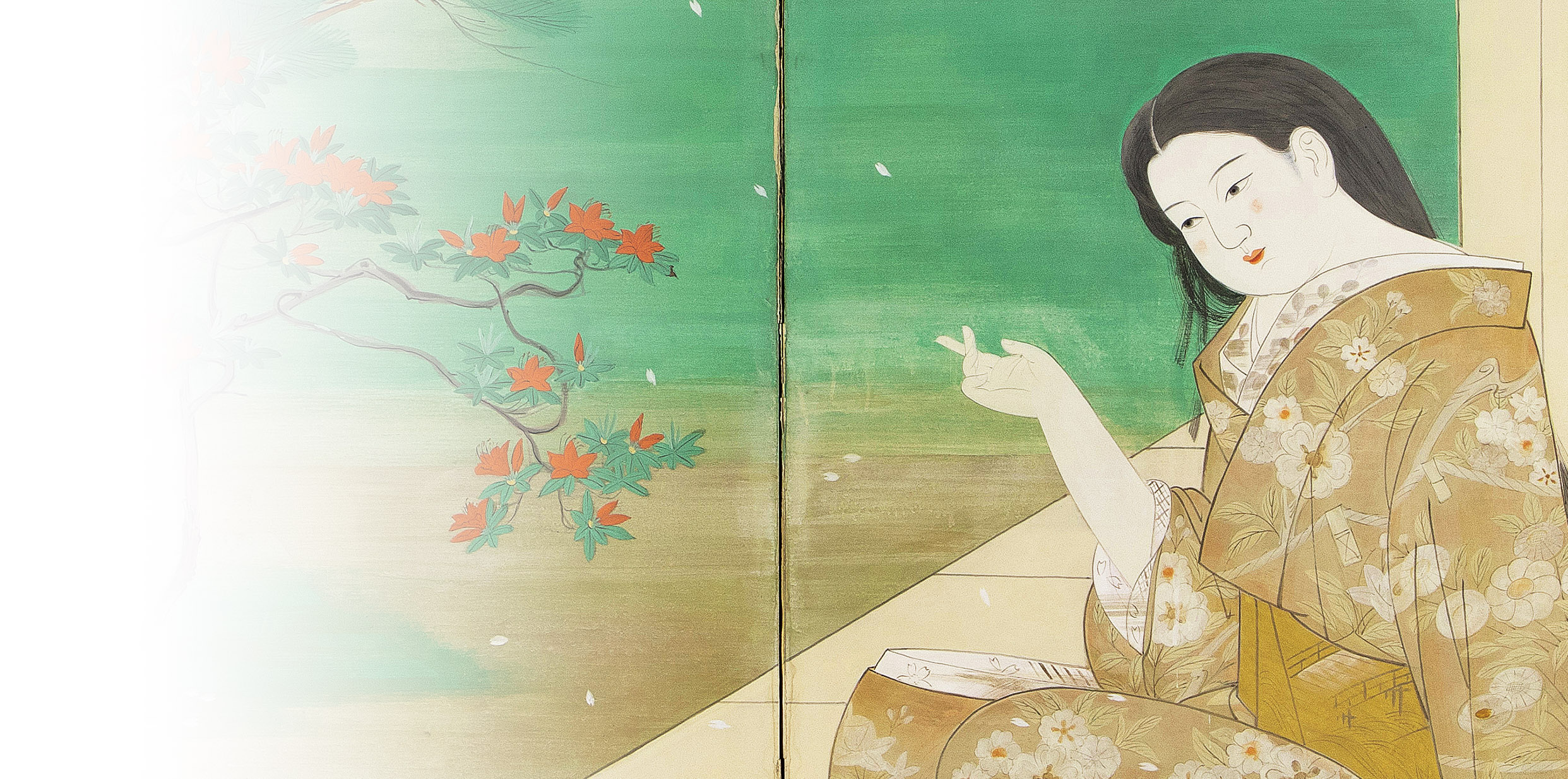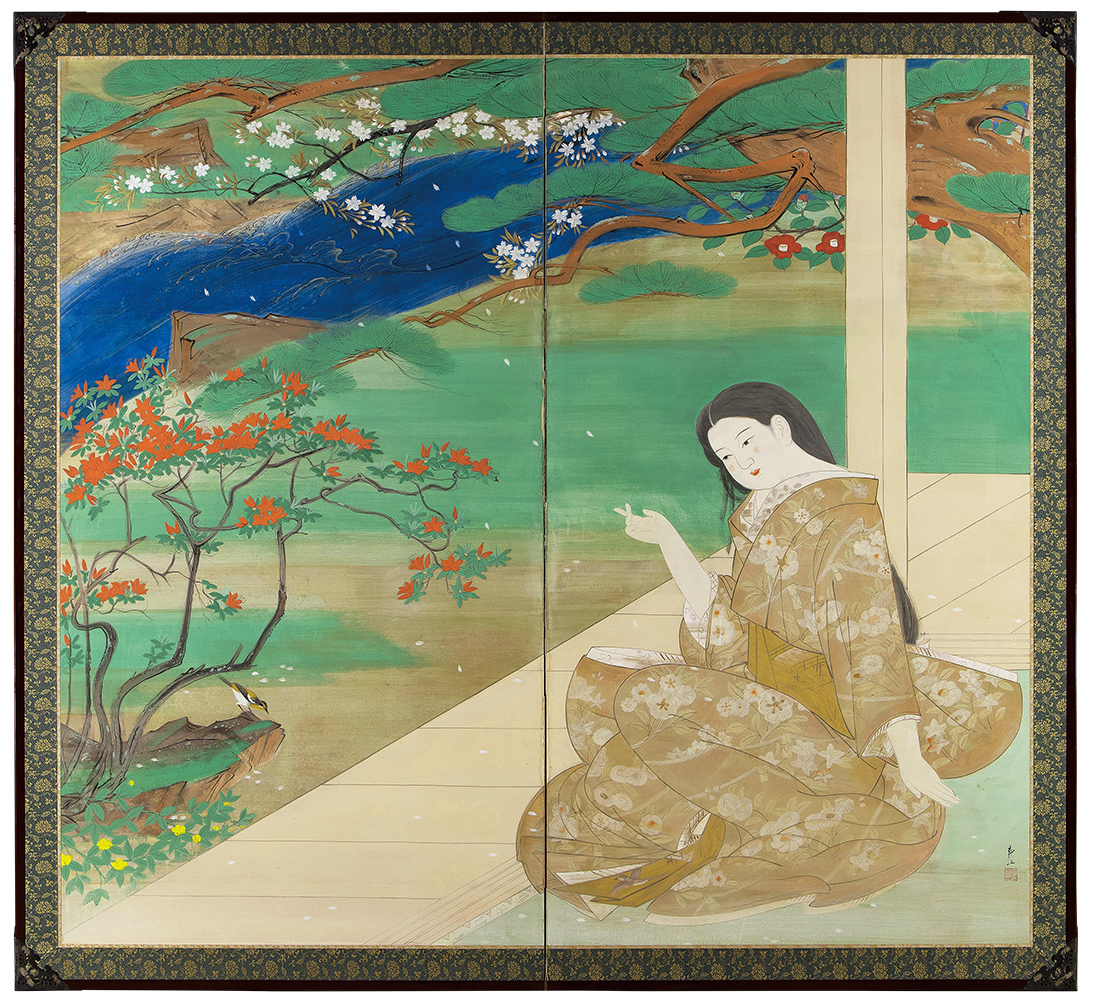vol.12 Final Chapter Okochi Yako, Beauty
Through this series, I’ve had the opportunity to broaden my knowledge of Japanese paintings, mainly Bijin-ga.
Upon starting this essay series, I was anxious if a person without any knowledge, like myself, would be able to write about Japanese Art. But gradually, through the encounter with new artists and works that I’ve never closely observed, I’ve come to appreciate Japanese painting more.
In this final essay, I would like to take a look at a two-panel folding screen, “Beauty” by Okochi Yako. The biggest work I have picked up in this series, the screen is sized 185×200 cm, and possibly the woman depicted here is close to actual human size.
Okochi Yako was a Japanese painter born in Yamanashi Prefecture in 1893. Originally, he studied Western-style painting, but switched to Japanese painting at the age of 30. Although he died at a young age of 39, he lived through the Meiji and Showa periods, when the modern Japanese art world was changing drastically.
His style is characterized by his unique vivid colors incorporating Nanga, Yamato-e and Western-style paintings. He was quite knowledgeable in Chinese calligraphy and painting as well, which he reflected in his signature landscape and bird-and-flowers paintings. In fact, his works that I have found in my research were mostly landscapes, and rarely human motif.
This work depicts a woman sitting on the veranda enjoying the cherry blossoms in the garden.
From the bird and flowers in the garden, I can see that this is in April – the yellow bird, Kibitaki, a bird that migrates to Japan in mid to late Spring, and spring flowers such as azaleas, camellias.
The production year is unknown, yet, in the use of vibrant colors, I felt the strong influence of western painting that characterizes the Meiji to Showa period.
The woman has her hair tied at the bottom with a paper called Takenaga, in what looks like a hairstyle called Osuberakashi. I am not sure of the length or styling of Kimono since she is sitting, but I can see the patterns on her Kimono – cherry blossoms on the underlayer, and garden scenery with cherry blossoms on top layer. The obi shows a beautiful bridge with a bird on its hanging front end.
The woman reaches for cherry blossom petals that scatter on to the tatami mats. I can imagine Okochi Yako’s love for cherry blossoms and how he must have been looking forward to this season. Isn’t it so elegant to enjoy the screen while we wait for the cherry blossoms?
Mademoiselle Yulia
Mademoiselle Yulia rose to prominence as a DJ and singer in her teens. In recent years, she has grown widely active as a kimono stylist, model, columnist, awards judge, and has become the face of numerous global campaigns of widely known brands. Yulia graduated from Kyoto University of the Arts in 2020 and styled the visual campaign for the Victoria & Albert Museum’s exhibition, Kimono -Kyoto to Catwalk-.
https://yulia.tokyo/
【A Note of Gratitude】
This 12th essay finalizes the series, Yulia’s Voyage to Japanese Art by Kimono stylist, Mademoiselle Yulia. Thank you for supporting us throughout the series! Thank you for all the readers who supported my journey.
【A Comment from the Author】
This essay series has come to an end with this 12th essay. My journey has given me an opportunity to examine Japanese paintings, especially Bijinga and Kimono, and deeper appreciation on Japanese art. Thank you all for reading my essays and went on a voyage with me.



